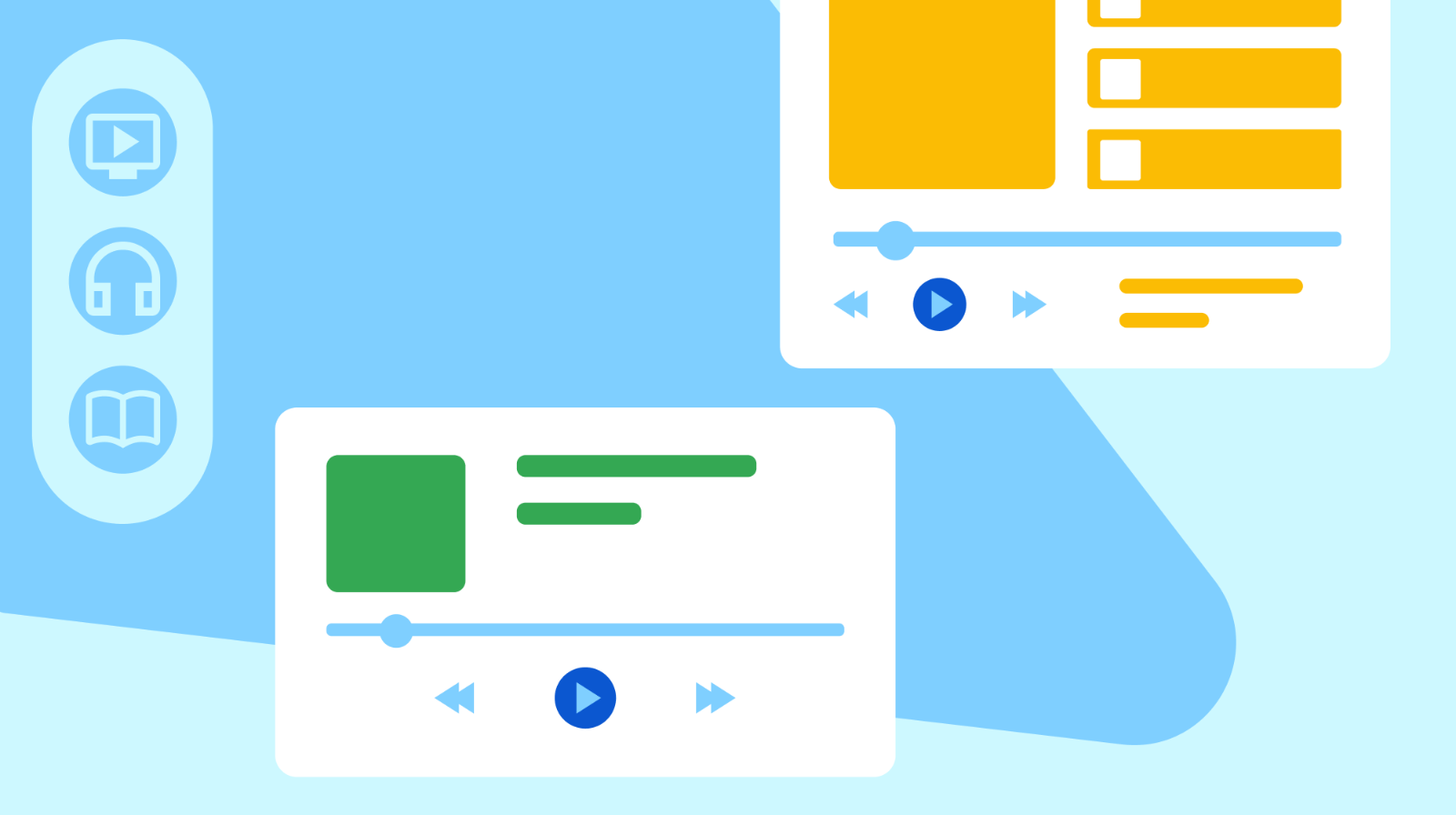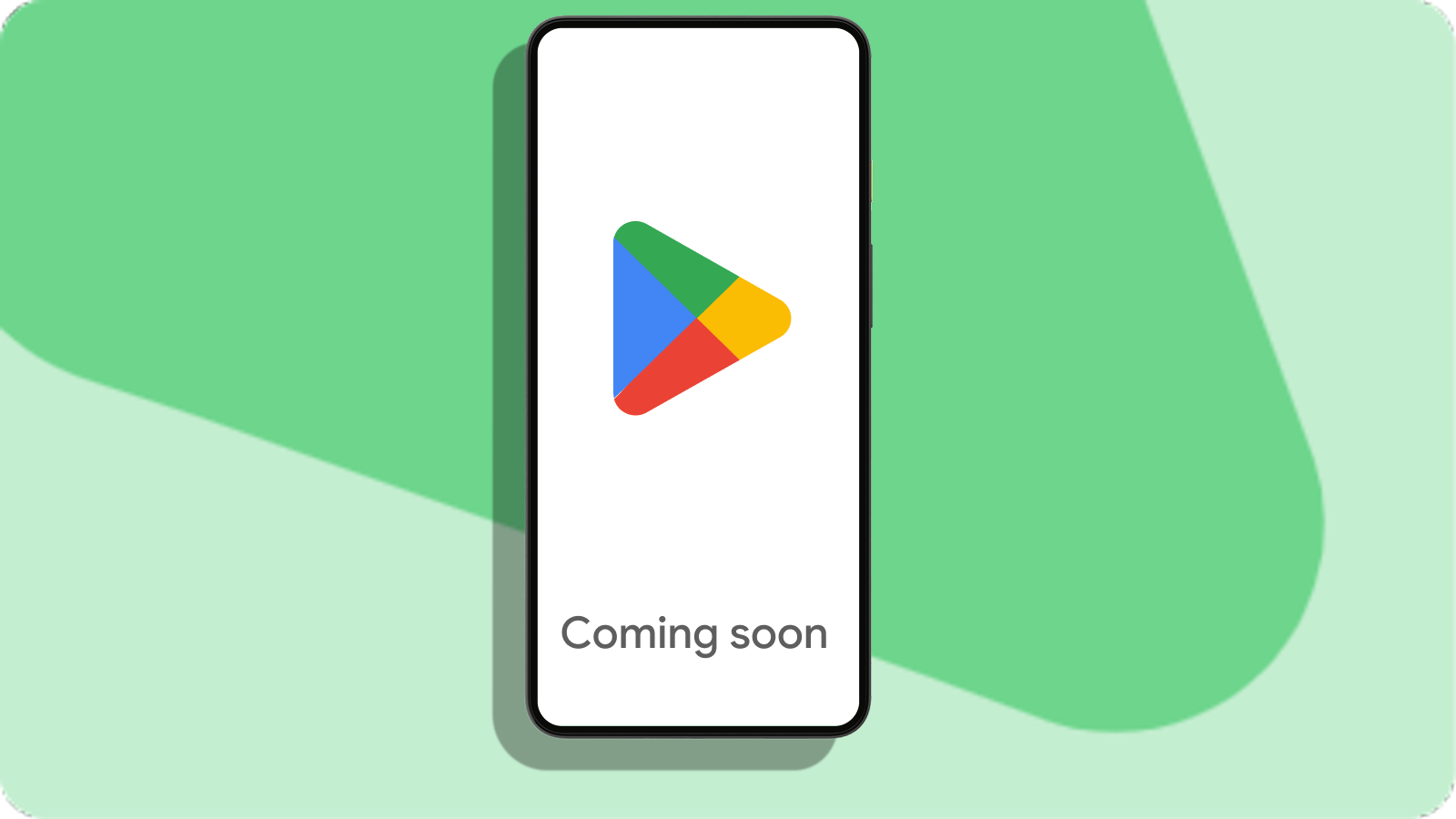1. 簡介
上次更新時間:2025 年 5 月 14 日
什麼是 Engage SDK?
Engage SDK 可將個人化應用程式內容,透過多種裝置端 Google 途徑提供給使用者,進而提高應用程式的參與度。有了 Engage SDK,應用程式就能針對已安裝的使用者,提供個人化 (一對一) 推薦內容和後續內容,在還沒開啟應用程式前吸引他們的目光。
內容途徑
集合 | Entertainment Space | Play 商店 (即將推出) |
|
|
|
透過全新的 Play 商店小工具,將內容直接顯示在使用者的主畫面上。 | 在特定 Android 平板電腦上,為娛樂內容建立新的接觸點。 | 今年夏天,您將可透過更多途徑取得應用程式內容,就從 Play 商店開始。 |
建構項目
完成本程式碼實驗室後,您將擁有一個 Android 影片應用程式,可將內容傳送至 Google 途徑。
軟硬體需求
- 最新版 Android SDK。
- 最新版 Android Studio。
- 搭載 Android 10 以上版本的行動裝置。
- USB 資料傳輸線,用於將行動裝置連接至開發電腦。
經驗
- 須具備 Java 或 Kotlin 相關經驗。
- 須具備 Android 開發知識。
2. 執行範例應用程式
如要開始使用,請下載範例應用程式的程式碼,以便您跟著本程式碼實驗室的說明操作。
如果已安裝 Git,請複製存放區。
git clone https://github.com/googlesamples/engage-sdk-samples.git
或者,您也可以點選這個連結下載原始碼,然後將下載的 ZIP 檔案解壓縮。
這個專案使用 Gradle 建構系統。請使用 gradlew 建構指令,或在 Android Studio 中使用「Import Project」,建構這個專案。
下載程式碼後,您會看到兩個範例專案。
- Java 開發人員:使用 read 範例應用程式
這個應用程式是基本圖書媒體庫。使用者可以從清單中選取書籍,然後開始閱讀。這個應用程式會示範如何發布「推薦和後續」資料。
- Kotlin 開發人員:使用 watch 範例應用程式
這個應用程式是基本影片媒體庫。使用者可以從清單中選取影片,然後開始觀看。這個應用程式會示範如何發布「推薦和後續」資料。
如需更多學習 Android 開發的相關資源,請造訪 developer.android.com 的開發人員指南。
3. 建構實體
在本程式碼實驗室中,我們將分別參考 Engage SDK Read 整合指南和 Engage SDK Watch 整合指南,分別針對read 和 watch 範例應用程式進行整合。
實體:代表叢集中單一項目的物件。實體可以是電子書、電影或任何相關內容類型。
針對 read 內容,SDK 提供以下實體類型:
- EbookEntity
- AudiobookEntity
- BookSeriesEntity
針對 watch 內容,SDK 提供以下實體類型:
- MovieEntity
- TvShowEntity
- TvSeasonEntity
- TvEpisodeEntity
- LiveStreamingVideoEntity
- VideoClipEntity
在 read 範例應用程式中,前往 EbookToEntityConverter.java 檔案,其中包含用於建構要發布的 EbookEntity 的方法。
EbookEntity.Builder entityBuilder = new EbookEntity.Builder()
.setName("NAME OF EBOOK")
.addAuthor("AUTHOR NAME")
.setActionLinkUri(Uri.parse("DEEPLINK URI OF THIS EBOOK"))
...
.build()
在 watch 範例應用程式中,前往 ItemToEntityConverter.kt 檔案,其中包含用於建構要發布的 MovieEntity 的方法。
val movieBuilder: MovieEntity.Builder =
MovieEntity.Builder()
.setName("NAME OF THE MOVIE")
.addPosterImage(
Image.Builder()
.setImageUri(
Uri.parse("android.resource://movie")
)
.setImageWidthInPixel(408)
.setImageHeightInPixel(960)
.setImageTheme(ImageTheme.IMAGE_THEME_LIGHT)
.build()
)
.setPlayBackUri(Uri.parse(movie.playbackUri))
.setReleaseDateEpochMillis(movie.releaseDate)
.setAvailability(movie.availability)
.setDurationMillis(movie.durationMillis)
.addGenre(movie.genre)
..
.build()
同樣地,您也可以在應用程式中,將自有資料項目轉換為要發布的相應 Engage 實體。
4. 建立推薦叢集
實體建立完成後,我們可以將實體分組至叢集中。
叢集是指一組打包在一起的內容集合,這些項目可視覺化為 UI 檢視畫面,其中包含單一開發合作夥伴提供的一組內容項目。
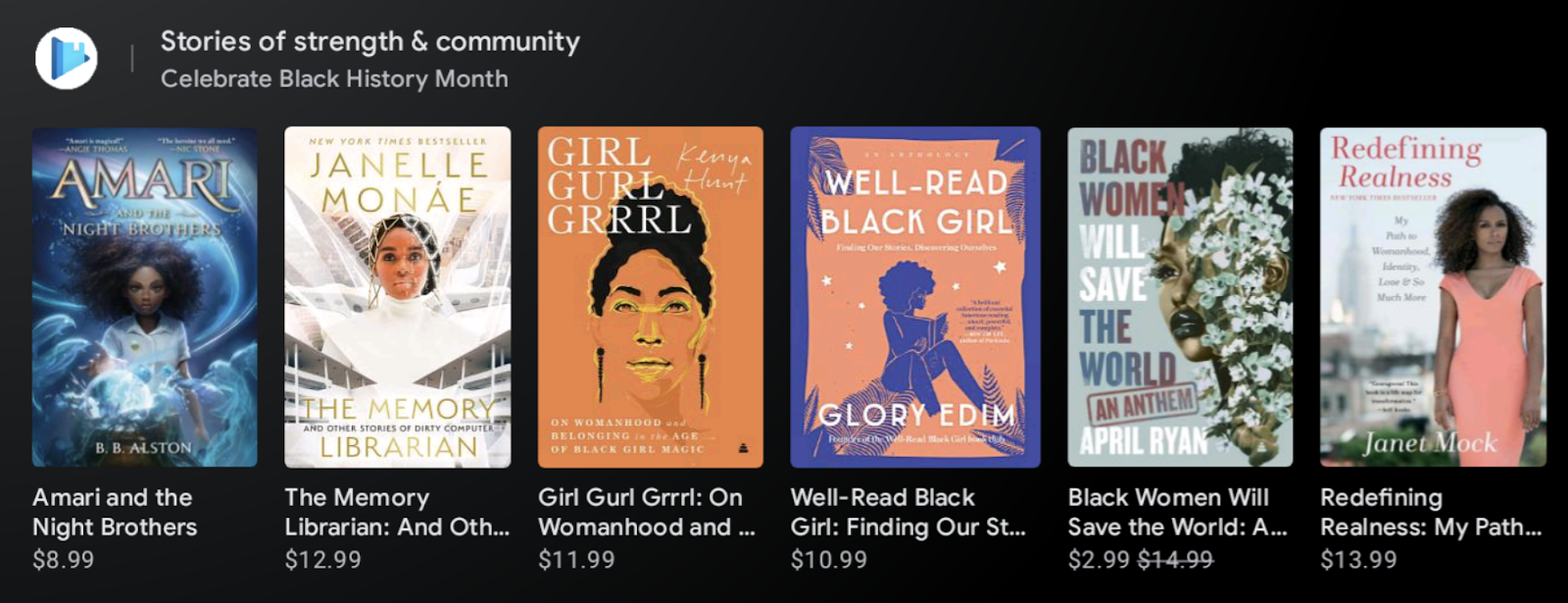 範例圖
範例圖
Entertainment Space UI 顯示單一合作夥伴提供的電子書實體推薦叢集。
針對大多數類別 (包括 read 內容和 watch 內容),SDK 提供下列叢集類型:
- 「推薦」叢集可根據使用者在應用程式中的行為提供個人化內容,並依主題 (例如新推出、價格下降或使用者喜愛的主題) 進行分類。每個應用程式最多可為每位使用者提供 5 個建議叢集。
- 「後續」叢集可在單一 UI 群組中,顯示多個應用程式提供的內容,協助使用者繼續觀看未看完的電影或電子書等內容。
- 「精選」叢集可使用更大、更高級的 UI 範本,在多應用程式叢集中突顯明星型內容。
我們要為 read 和 watch 內容建立推薦叢集。
在 read 範例應用程式中,前往 GetRecommendationClusters.java 檔案,這個檔案會顯示建構推薦叢集的範例。
RecommendationCluster.Builder clusterBuilder = new RecommendationCluster.Builder();
// Set the cluster title
clusterBuilder.setTitle("For You");
for (int id : ebookIds) {
//Create an ebook entity.
EbookEntity entity = EbookToEntityConverter.convert(id);
// Add the ebook entity to the cluster
clusterBuilder.addEntity(entity);
}
// Build the cluster
return clusterBuilder.build();
在 watch 範例應用程式中,前往 ClusterRequestFactory.kt 檔案,這個檔案會顯示建構推薦叢集的範例。
// Loads all the movie data
val recommendationsList = movieDao.loadMovieIsCurrentlyWatching(false)
val recommendationCluster = RecommendationCluster.Builder()
for (item in recommendationsList) {
//Create a movie entity.
val movieEntity = ItemToEntityConverter.convertMovie(item)
// Add the movie entity to the cluster
recommendationCluster.addEntity(movieEntity)
}
// Build the cluster
return recommendationCluster.build
5. 發布推薦叢集
我們已瞭解如何建構實體,以及如何將這些實體分組成叢集。下一步是瞭解如何發布叢集。
AppEngagePublishClient 用於建立連線,以發布叢集。
步驟 1:初始化用戶端
// Java version
AppEngagePublishClient client = new AppEngagePublishClient(context);
// Kotlin version
val client = AppEngagePublishClient(context)
步驟 2:建立發布叢集的要求
在 read 範例應用程式中,查看 EngageServiceWorker.java 中的 setRecommendations 方法
// Initialize the builder
PublishRecommendationClustersRequest.Builder publishRequestBuilder = new PublishRecommendationClustersRequest.Builder();
// Add all Recommendation Clusters
for (RecommendationCluster cluster : clusters) {
publishRequestBuilder.addRecommendationCluster(cluster);
}
// Build the request
publishRequestBuilder.build();
在 watch 範例應用程式中,查看 ClusterRequestFactory.kt 中的 constructRecommendationClustersRequest 方法
// Initialize the builder
val request = PublishRecommendationClustersRequest.Builder()
// Add all Recommendation Cluster
.addRecommendationCluster(recommendationCluster)
// Build the request
.build()
步驟 3:在 AppEngagePublishClient 中呼叫 publishRecommendationClusters 方法
在 read 範例應用程式中,查看 EngageServiceWorker.java 中的 setRecommendations 方法
client.publishRecommendationClusters(publishRequest);
在 watch 範例應用程式中,查看 EngageServiceWorker.kt 中的 publishRecommendations 方法
client.publishRecommendationClusters(request)
使用 isServiceAvailable API
請先呼叫 isServiceAvailable,確認是否允許發布,再呼叫 publish API。
在 read 範例應用程式中,查看 EngageServiceWorker.java 中的 startWork 方法
client.isServiceAvailable.addOnCompleteListener { task ->
if (task.isSuccessful) {
// Handle IPC call success
if(task.result) {
// Service is available on the device, proceed with content publish
// calls.
client.publishRecommendationClusters(request)
} else {
// Service is not available, do not publish.
}
} else {
// The IPC call itself fails, proceed with error handling logic here,
// such as retry.
}
}
在 watch 範例應用程式中,查看 EngageServiceWorker.kt 中的 doWork 方法
client.isServiceAvailable.addOnCompleteListener { task ->
if (task.isSuccessful) {
// Handle IPC call success
if(task.result) {
// Service is available on the device, proceed with content publish
// calls.
client.publishRecommendationClusters(request)
} else {
// Service is not available, do not publish.
}
} else {
// The IPC call itself fails, proceed with error handling logic here,
// such as retry.
}
}
6. 發布狀態
建議使用 updatePublishStatus API,指出內容未發布的原因。這樣做可協助 Google 避免在您應用程式刻意不發布內容時發出錯誤警告,引導使用者採取修正動作來存取內容,以及提供有關內容發布健康度的洞察資料。
如需狀態碼,請參閱開發人員網站。舉例來說,如果是因為使用者必須登入才能查看內容,請使用 NOT_PUBLISHED_REQUIRES_SIGN_IN。我們會在下一個步驟中套用這個狀態碼。
在 read 範例應用程式中,查看 EngageServiceWorker.kt 中的 publishAndSetResult 方法
int publishStatusCode;
if (loggedInAccount.isPresent()) {
// If an account is logged in and content is published
publishStatusCode = AppEngagePublishStatusCode.PUBLISHED;
} else {
// If an account is not logged in and no content is published
publishStatusCode = AppEngagePublishStatusCode.NOT_PUBLISHED_REQUIRES_SIGN_IN;
}
setPublishStatus(client, publishStatusCode);
})
在 watch 範例應用程式中,查看 EngageServiceWorker.kt 中的 publishUserAccountManagement 方法
private suspend fun publishUserAccountManagement(): Result {
val publishTask: Task<Void>
val statusCode: Int
if (db.accountDao().isAccountSignedIn()) {
// If an account is logged in and content is published
statusCode = AppEngagePublishStatusCode.PUBLISHED
} else {
// If an account is not logged in and no content is published
statusCode = AppEngagePublishStatusCode.NOT_PUBLISHED_REQUIRES_SIGN_IN
}
return publishAndProvideResult(publishTask, statusCode)
}
7. Work Manager 和廣播意圖
Work Manager
建議您在背景執行內容發布工作 (使用 WorkManager)。定期 (例如每天) 並/或根據使用者事件 (例如應用程式開啟時或使用者完成閱讀工作階段後) 排定執行時間。以下範例聚焦於排定的發布內容。
在 read 範例應用程式中,SetEngageState.java 檔案中的 queuePeriodicSetEngageStateWorker 提供如何設定 WorkManager 的範例。
// Create a work manager
WorkManager workManager = WorkManager.getInstance(appContext);
// Set up a periodic work request for 24 hrs.
PeriodicWorkRequest publishRequest =
new PeriodicWorkRequest.Builder(
EngageServiceWorker.class, /* repeatInterval= */ 24, TimeUnit.HOURS)
.setInputData(clusterToPublishData)
.build();
// Add the work request to queue
workManager.enqueueUniquePeriodicWork(
publishWorkName, ExistingPeriodicWorkPolicy.CANCEL_AND_REENQUEUE, publishRequest);
在 watch 範例應用程式中,Publisher.kt 中的 periodicallyCallEngageServiceWorker 提供如何設定 WorkManager 的範例
// Set up a periodic work request for 24 hrs.
val workRequest = PeriodicWorkRequestBuilder<EngageServiceWorker>(
repeatInterval = 24,
repeatIntervalTimeUnit = TimeUnit.HOURS
)
.setInputData(workDataOf(PUBLISH_TYPE to publishType))
.build()
// Create a work manager and add the work request to queue
WorkManager.getInstance(context)
.enqueueUniquePeriodicWork(
workerName,
ExistingPeriodicWorkPolicy.CANCEL_AND_REENQUEUE,
workRequest
)
廣播意圖
除了透過工作發出發布內容 API 呼叫,您還需要設定 BroadcastReceiver 來接收內容發布要求。
廣播意圖的目標主要用於應用程式重新啟動及強制同步處理資料。廣播意圖的傳送頻率通常不高。觸發廣播意圖的唯一時機,就是 Engage Service 判定內容可能過時 (例如已滿一週)。這樣一來,即使應用程式已有長時間未執行,使用者也能獲得最新的內容體驗。
BroadcastReceiver 必須透過下列兩種方式進行設定:
- 使用 Context.registerReceiver() 以動態方式註冊 BroadcastReceiver 類別的例項,這樣做可讓仍在記憶體中運行的應用程式進行通訊。
開啟 read 範例應用程式中的 MainActivity.java 檔案,檢查下列項目:
private void registerReceiver() {
BroadcastReceiver publishReceiver = new EngageServiceBroadcastReceiver();
IntentFilter filter = new IntentFilter();
filter.addAction(Intents.ACTION_PUBLISH_RECOMMENDATION);
filter.addAction(Intents.ACTION_PUBLISH_FEATURED);
filter.addAction(Intents.ACTION_PUBLISH_CONTINUATION);
int flags = ContextCompat.RECEIVER_EXPORTED;
ContextCompat.registerReceiver(getApplicationContext(), publishReceiver, filter, flags);
}
- 在 AndroidManifest.xml 檔案中使用 <receiver> 標記,以靜態方式宣告實作項目。這樣應用程式就能在未執行的狀態下接收廣播意圖,也能發布內容。
開啟 read 範例應用程式中的 AndroidManifest.xml 檔案,檢查以下內容:
<receiver
android:name=".publish.EngageServiceBroadcastReceiver"
android:exported="true">
<intent-filter>
<action android:name="com.google.android.engage.action.PUBLISH_RECOMMENDATION" />
<action android:name="com.google.android.engage.action.PUBLISH_FEATURED" />
<action android:name="com.google.android.engage.action.PUBLISH_CONTINUATION" />
</intent-filter>
</receiver>
服務會傳送下列意圖:
- com.google.android.engage.action.PUBLISH_RECOMMENDATION:建議在收到此意圖時啟動 publishRecommendationClusters 呼叫。
- com.google.android.engage.action.PUBLISH_FEATURED:建議在收到此意圖時啟動 publishFeaturedCluster 呼叫。
- com.google.android.engage.action.PUBLISH_CONTINUATION:建議在收到此意圖時啟動 publishContinuationCluster 呼叫。
8. 使用驗證應用程式進行測試
下載並使用驗證應用程式驗證整合結果
驗證應用程式應將每個叢集顯示為獨立的一列。
- 輸入要發布資料的套件名稱。
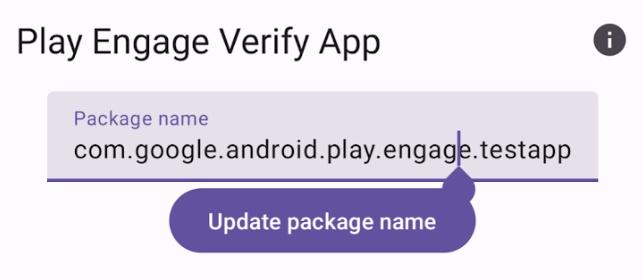
- 確認叢集中的所有實體皆已發布。
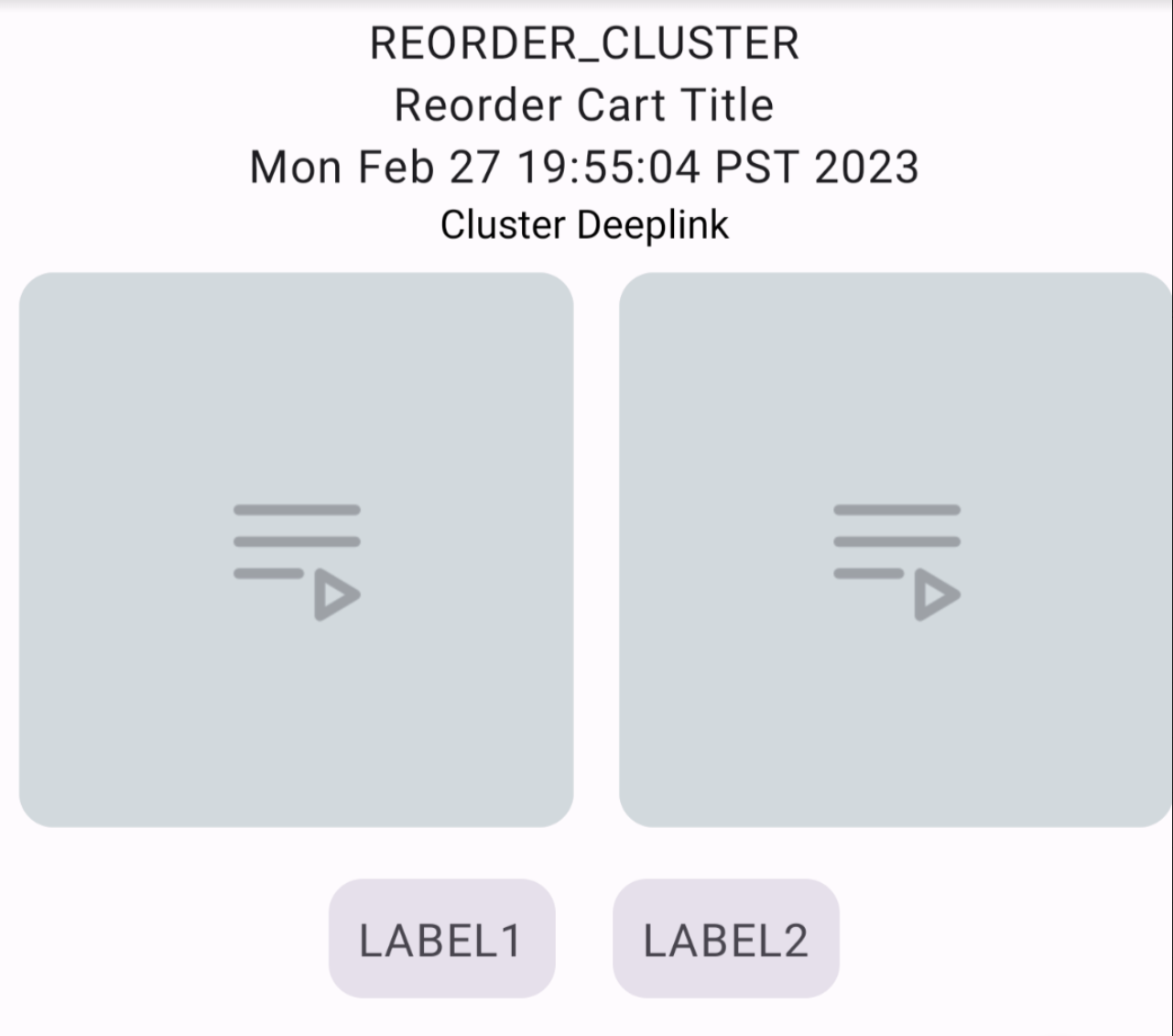
- 確認實體中的所有欄位皆已發布。開發人員可以點選資料列中每個項目的代表圖片來驗證意圖。
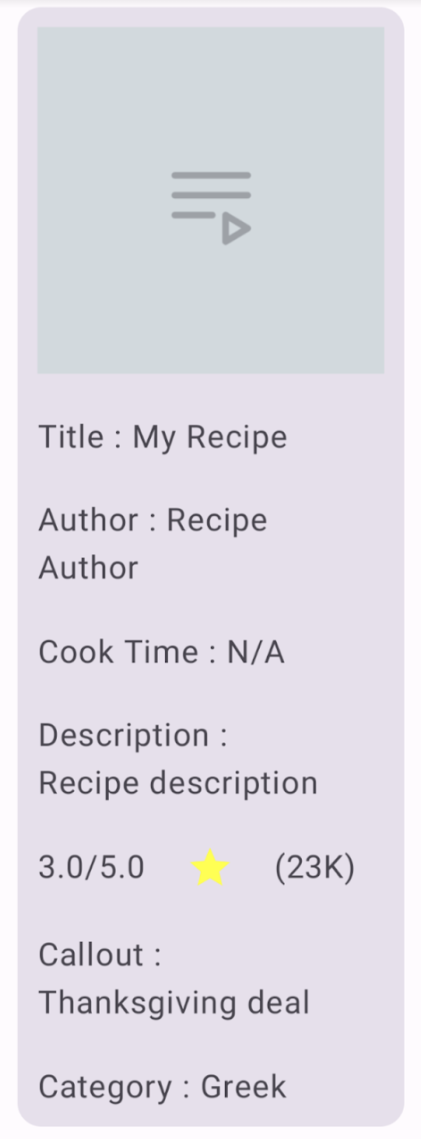
驗證廣播意圖流程
如要使用驗證應用程式驗證廣播意圖,請按一下使用者介面頂端的按鈕,觸發傳送廣播的邏輯。

9. 恭喜
現在您已經知道如何在 Android 應用程式中加入 Engage SDK。
詳情請參閱 Engage SDK 開發人員指南和商家網站。
資源
根據要發布的內容類型,SDK 會包含不同類型的實體類別。您可以在下列各產業整合指南中,查看可用的實體清單:


